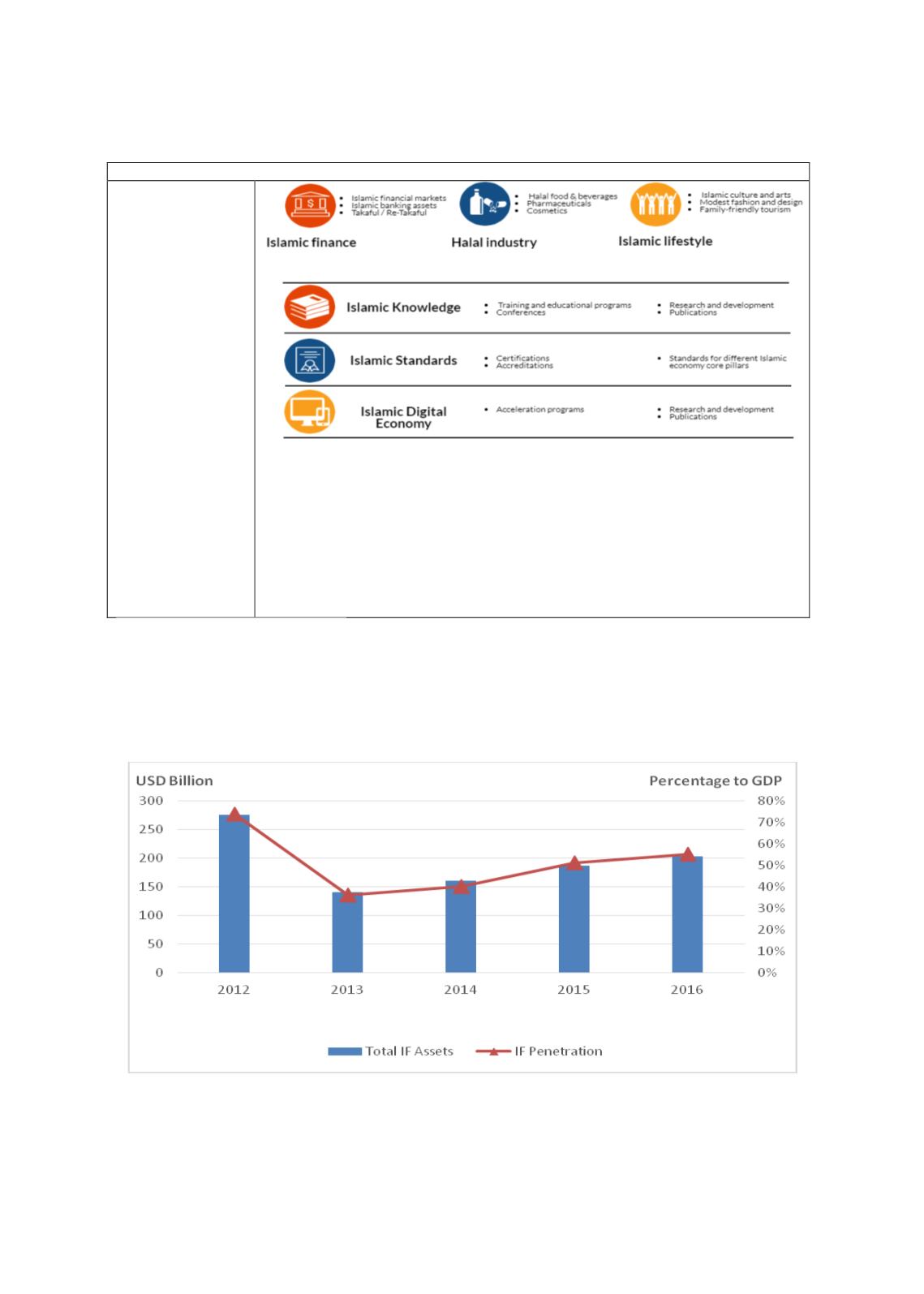

97
Refreshed Islamic Economy Strategy (2017-2021)
Key objectives:
To
set
strategic
directions to ensure
long-term
impact
and
support
stakeholders
in
defining
and
executing initiatives
to grow the global
Islamic economy via
3
core
sectors
(Islamic
finance,
halal
industry and
Islamic
lifestyle)
and
3
enabling
pillars
(Islamic
knowledge, Islamic
standards
and
Islamic
digital
economy).
Key Strategies for Sector 1:
To increase the contribution of Islamic finance products to Dubai’s/the UAE's
GDP and contribute to the resilience and diversification of the national
economy.
To develop robust and transparent capital markets in Dubai/the UAE as a
prime destination for investors and capital seekers.
To develop a global framework for Islamic finance and become globally
recognised for Islamic finance educational programmes and philanthropic
projects.
Sources: DIEDC (2013), DIEDC (2017)
As a result of these initiatives, Islamic finance assets in the UAE have been increasing since
2013 (as depicted in Chart 4.15). In 2016, the value reached USD203 billion, representing 55%
of the UAE’s total GDP.
Chart 4.15: UAE’s Islamic Finance Penetration − Assets to GDP Ratio (2012-2016)
Source: DIEDC (2017a)
















